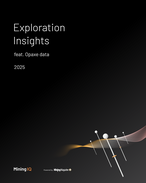This article is 2 years old. Images might not display.
Inhalation of this dust, which is generated at a mine site during cutting; sanding; drilling; crushing; grinding; sawing; scraping; jackhammering; excavating, and hauling, is a significant health hazard.
According to the Department of Labor, more than 2.3 million Americans are exposed to silica at work, with mining accounting for a disproportionate amount.
Chronic exposure to crystalline silica has been linked to several respiratory diseases, including silicosis (acute silicosis, accelerated silicosis, simple chronic silicosis, progressive massive fibrosis), nonmalignant respiratory diseases (eg, emphysema and chronic bronchitis), lung cancer, and renal disease.
For coal miners, that risk also includes "black lung," which in the draft bill is described as a term used collectively for Coal Workers' Pneumoconiosis (CWP) and includes emphysema, silicosis, and chronic bronchitis.
"These diseases are debilitating, incurable, and can result in disability and premature death," the proposal states. "There are no specific treatments to cure CWP or COPD. These chronic effects may progress even after miners are no longer exposed to coal dust."
MSHA is calling for a reduction in the amount of particulates miners are exposed to during a shift. If passed, the permissible exposure limit of respirable crystalline silica would be set at 50 micrograms per cubic meter of air (µg/m3) for an entire shift exposure.
MSHA's proposal also includes other requirements to protect miner health and updates the Agency's existing respiratory protection requirements. The draft reform also includes other protections.
"In addition to reducing the existing exposure limit, the proposal also includes other requirements to protect miners' health - such as exposure sampling - and medical surveillance at no cost for metal and nonmetal miners," it reads. "It would also replace existing outdated requirements for respiratory protection with a standard that reflects the latest advances in respiratory protection technologies and practices."
Earlier this year, researchers at Penn State released a report examining causes of respiratory diseases related to coal mine dust. The team looked at the correlation between respiratory illness and particle size.
"We found that nanoparticles have the same toxicity as silica," said Shimin Lui, associate professor of energy and mineral engineering at Penn State.
Lui continued: "Many think progressive fibrosis is from silica, but really the coal nanoparticles may also contribute to the toxicity. This is the first study of its kind to understand nano-particulate toxicity."
Better ventilation
In April, the Ontario government implemented more stringent underground ventilation rules aimed at diesel exhaust in mines.
The rules, which take full effect on September 1, 2023, have been touted as the "most protective in North America."
"The new exposure limit will be a time-weighted average exposure to elemental carbon of not more than 0.12 milligrams per cubic metre of air, instead of 0.4 milligrams per cubic metre of air based on total carbon," the official statement read.
The government also included legislation to fast-track the use of robots and autonomous machinery underground to increase miner safety further.
"These specialised machines with a high-definition camera will be controlled by an operator to identify loose rocks, misfired explosives and other safety hazards while keeping workers out of danger," the statement read.
Back in the US, the MSHA will hold several public hearings in August to give stakeholders, sector participants and miners the opportunity to present testimony ahead of the final decision.
























